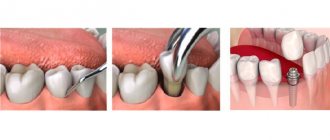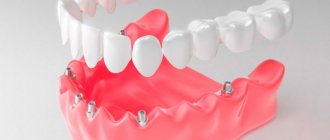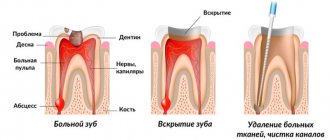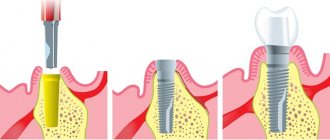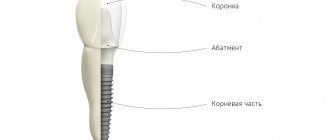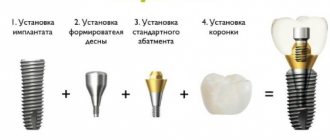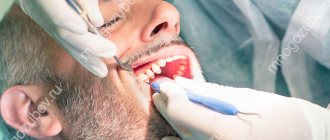Modern dental prosthetics can completely restore the aesthetics of the dentition and its chewing functions. People may face the need for surgical removal at any age. Among the achievements of orthopedic dentistry, anyone can choose a suitable replacement option. Dental prostheses are produced in different types, differing in the material of manufacture, cost, and service life. For the production of structures, alloys of precious metals, ceramics, special plastics, polymers, nylon and other types of raw materials are used.
There are two types of prosthetics after tooth extraction:
- Removable dental structures can be removed and put on by the patient as needed. The products are attached to the supporting teeth using hooks or micro-locks. For edentulous patients, models are used that are fixed to the gums using suction cups or a special gel.
- Fixed dentures are installed in the jaw (implants) or attached to supporting teeth (bridges).
Each category is represented by several options. Among them, dentists select the appropriate solution based on the condition of the oral cavity and the health of the patient.
Depending on the service life of the products, temporary and permanent dentures are distinguished. Models of the first type are designed to last only a few months. The products are used to temporarily close the postoperative gap.
Fixed dentures remain the most popular way to restore the beauty of a smile. This replacement option is more convenient compared to removable devices. It is easy to care for and helps preserve the natural functions of the dental system. Permanent prosthetics are performed in different ways:
- The installation of crowns made of metal ceramics or a metal alloy is performed on a previously prepared tooth. This method is used if the root is intact, but the top is destroyed.
- Implantation of one or more teeth involves inserting an artificial root into the jaw. A permanent or temporary crown is placed on it. This method is indicated for complete or partial edentia. Sometimes doctors use an implant as a support for a bridge.
- Bridges are placed after the amputation of several teeth located nearby.
- Adhesive structures are secured using an adhesive solution. In this case, there is no need to depulp the adjacent teeth. This restoration method is one of the most technologically advanced in orthopedic dentistry.
Prosthetics after tooth extraction and indications for the procedure
Installation of a denture allows you to completely restore the functional and aesthetic properties of the jaw apparatus. The indication for the procedure is single or multiple damage to the jaw as a result of trauma, surgical amputation due to advanced caries, or other diseases of the oral cavity.
If the crown is partially destroyed, a microprosthesis is installed instead of the usual one. This group includes inlays, veneers and ultraneers. The products effectively solve aesthetic problems with minimal trauma to natural bone and gum tissue.
Is it possible to secure a prosthesis with only 10 crowns on 4 implants?
When using all-on-4 prosthetics, the length of the denture is 12 crowns (that is, 24 teeth on two jaws, normally there should be 28 living teeth). But it all depends on the situation and on the materials that will be used to make the prostheses. In the original Nobel Biocare protocol, prosthetics are performed up to the 6th tooth (adaptation period), which makes it possible to restore up to 90% of chewing function. With permanent prosthetics, chewing function is restored by 100%.
In rare cases, the doctor may actually decide to place a prosthesis consisting of only 10 crowns - but this is rare. And such a prosthesis is placed only on a temporary basis.
An example of an adaptive prosthesis consisting of 12 crowns on four Nobel implants. NobelZygoma zygomatic models were additionally used on the upper jaw
In general, this amount is more than enough for full chewing and even more so for creating a beautiful smile. If the patient insists on installing a prosthesis consisting of 14 crowns (up to 7 teeth), then several more supports will be required - for example, an all-on-6 protocol should be used. But it is important to remember that a solution with four implants is cheaper than with six, which is what accounts for its greater popularity. At the same time, there are no obvious functional differences in prostheses made of 12 or 14 crowns - you can eat fully with both, it’s just that when up to 6 teeth are restored, not 100%, but 90% of the chewing function is restored.
Contraindications
Thanks to the variety of techniques for each person, you can choose a way to restore the beauty of your smile. All dentures have indications for use and contraindications. The decision to replace a lost element after amputation is made by the attending physician based on the results of dental diagnostics, taking into account the age and condition of the body.
As for the general reasons, experts do not recommend performing surgical procedures if you are pregnant, undergoing rehabilitation after a serious illness or complex operation, or are sick with ARVI. You should not install implants or dentures during periods of exacerbation of chronic diseases, exhaustion or acute stress.
Tell your doctor if you are allergic to anesthetics or take any medications. Some drugs affect blood clotting and the rate of tissue regeneration. This can create problems during the procedure and while the wound is healing.
Often, poor oral hygiene is an obstacle to treatment. This temporary contraindication can be eliminated through therapeutic measures.
Can the screw fastening become loose and the prosthesis fly off...?
Screw fastening is currently considered the most advanced when carrying out both single restorations and when restoring a full row of teeth - this is the most reliable solution. The dentures are attached using small screws - they are inserted into the abutment and implant through the chewing surface of the crowns. The holes are filled from above with a liquid light-curing polymer. This fastening allows, if necessary, to remove the prosthesis, reline it or clean it without damaging the implants.
MYTH
All-on-4 does not have the ability to combine the method of fastening the prosthesis with screws and with cement at the same time.
IS IT TRUE
Yes, indeed it is. But this is an advantage! No one will combine two completely different types of fastening in one prosthesis, because then there is no point in more expensive screw fixation. The prosthesis is placed on the entire jaw and is a complete structure, not assembled into segments. If some part of it is fixed to cement, then it will be impossible to remove it without cutting, even if there is a screw fixation in another area. This means that after such removal, the entire structure of the prosthesis will need to be changed.
Of course, screw fastening has certain disadvantages. In particular, loss of screw fixation may occur. But this phenomenon is extremely rare in good implant systems and most often occurs due to refusal of timely correction or change of the adaptive design to a permanent one, as well as abuse of hard foods. The situation is easily corrected - the screws are tightened/changed.
If you follow all the recommendations of your doctor, undergo timely examinations as part of free service, you will not encounter problems with the integrity of the prosthesis.
Installation of the prosthesis immediately after removal (within 24 hours)
Clients are always interested in how many days after an injury or surgery they can get dentures. Dentistry has express methods for instantly eliminating smile defects. There is no need to hide an ugly gap from others and experience discomfort when communicating! We are talking about simultaneous implantation, which is performed in one stage. The dentist installs an artificial root into the resulting hole and immediately puts on a crown, which is prepared in advance. It creates a load on the jaw apparatus and prevents atrophy.
Another option is immediate dentures, which are temporary and are designed for 3-4 months of use.
THERAPEUTIC STAGE
It involves two main directions: sanitation of the oral cavity and depulpation of the patient’s teeth, as well as additional directions: treatment and preparation of teeth, as well as preparation of supporting teeth.
SANATION OF THE ORAL CAVITY
Sanitation of the oral cavity is a mandatory procedure before dental prosthetics. It is carried out with the aim of creating the most favorable conditions for prosthetics by removing inflammatory foci in the body and oral cavity.
PROFESSIONAL TEETH CLEANING
Plaque on the surface of teeth is an ideal environment for bacteria to multiply and develop and can cause bad breath and tooth decay. Hardened and formed plaque on the teeth cannot be removed without special dental devices, so before prosthetics, professional teeth cleaning is carried out, since, according to experts, after removing tartar, caries under the crown of the teeth does not occur.
In addition, at this stage of preparation, the specialist advises the patient on the correct implementation of oral hygiene procedures, which subsequently guarantees the maximum service life and functioning of the denture after installation.
DENTAL TREATMENT
One of the main manipulations to ensure high-quality dental prosthetics is the treatment of caries, including the replacement of fillings. This is due to the fact that untreated caries can cause bad breath, weakened immunity and toothache, as well as malaise, headaches, increased sensitivity to allergens and other complications. If a patient has pulpitis, it is necessary to treat it and fill the root canals.
PERIODONTAL TREATMENT
It is worth understanding that before starting dental prosthetics, it is necessary to eliminate all the patient’s periodontal diseases, the clinical manifestations of which are bad breath, loose teeth, bleeding gums and the presence of periodontal pockets. If necessary, the specialist will splint loose teeth to strengthen them.
In case of persistence and subsequent exacerbation of periodontal disease after prosthetics, mobile teeth will not be able to hold the removable denture structure.
TOOTH PREPARATION
For medical reasons, nerves in teeth to be replaced can be removed, followed by filling the canals of these teeth. Among other things, the specialist prepares the supporting teeth for the crown by grinding them down.
PREPARATION OF AUTHORIZED TEETH
The design for prosthetics needs support, so it is necessary to install special crowns on the supporting teeth, which take on the complex chewing load and the weight of the prosthesis. To perform their tasks, the supporting teeth must be in excellent condition.
Before installing the structure, the specialist prepares the supporting teeth, creating tight contact between the crown and the tooth in order to ensure the most physiological distribution of the load on the teeth and prevent the possible development of carious lesions.
Expert opinion
Roman Borisovich Alekperov
orthopedic dentist
Experience: 24 years
If you are just planning to visit a surgeon for tooth extraction, consider the option of one-stage implantation. This unique method involves placing an implant into the resulting socket immediately after extraction. No additional manipulations - incisions or detachment of a mucosal flap, as with the classic protocol - are performed. This gentle method will allow you to resolve the issue of tooth restoration immediately at the time of its removal. Important: there are contraindications for immediate implantation! Please clarify the possibility of its use in your case during your consultation.
Why shouldn't you postpone prosthetics?
The loss of even one tooth leads to a number of problems with the dental system: chewing loads are redistributed incorrectly, its “neighbors” gradually shift towards the missing tooth, the jaw is deformed, and the bite is disturbed. In addition, the person experiences physical and psychological discomfort: the quality of chewing food deteriorates, diction may suffer, and communication problems arise due to the fact that the person is embarrassed by the aesthetic defect.
The longer prosthetics are delayed, the more the problems worsen and the more difficult it will ultimately be to solve them. In addition, if there is no orthopedic treatment for a long time, several more teeth in the vicinity of the defect will eventually need to be removed.
Therefore, in cases where it is possible to do prosthetics immediately after tooth extraction, it is better for the patient to decide on this option - in this case, orthopedic treatment will be faster and more comfortable, and the period of adaptation will be minimal. In those cases when the doctor suggests waiting for the tissue to heal, there is no need to wait longer than necessary - as soon as the dentist decides that it is already possible to install a prosthesis, it is better not to delay treatment.
Implantation of long-extracted teeth
Long-term absence of a tooth is fraught with thinning and atrophy of the bone. Under such conditions, the implant will not be able to be firmly fixed and function normally. The layer of bone tissue covering the structure will be too thin (less than 2 mm). Subsequently, bone destruction will occur and the upper part of the implant will be exposed.
Installation of an artificial root in place of a long-lost unit is possible only after bone grafting . This is done in one of the following ways:
- Splitting of the alveolar process - the atrophied area of the bone is sawed longitudinally. An implant is implanted into the resulting hole. The empty space is filled with a fixing substance and sutures are applied. Crown installation is possible in 2-4 months.
- Bone block transplantation (autotransplantation) - bone tissue is used from other parts of the patient’s or donor’s jaw. Engraftment lasts at least 6 months.
- Guided bone regeneration (osteoplasty) - the transplanted bone is covered with a membrane to allow bone growth. The engraftment process takes 4-5 months.
- Sinus lift - indicated for implantation of lateral superior units. The lower wall of the maxillary sinus is lifted and the resulting space is filled with bone material. The implant is installed immediately or after 4-5 months.
Prices for services
Consultation with a dentist - orthopedist Free Stump tab from RUB 3,900. up to 9500 rub. Ceramic inlay from 8200 rub. up to 17,500 rubles. Metal-ceramic crown CoCr from 7,200 rubles. up to 10,000 rubles. Metal-free ceramics 25,000 rubles. Ceramic veneers from 17,000 rubles. up to 30,000 rubles. Removable prosthesis 9,500 rubles. up to 18,000 rubles Clasp clasp prosthesis from 25,000 rubles up to 28,000 rubles Clasp monomer-free prosthesis 36,000 rubles Nylon prosthesis 15,000 rubles up to 34,000 rubles; metal ceramics for implants from 20,000 rubles. up to 25,000 rub.Cost of services
The cost of services depends on:
- The number of missing elements of the dentition.
- The type of prosthesis or implants chosen.
- Difficulties in carrying out all manipulations, etc.
We don't inflate prices. Thanks to this, restoration is possible even on a limited budget. The doctor will draw up a financial treatment plan in advance. This will allow you to plan your expenses. In addition, we provide discounts and run special promotions. Thanks to this you can save money.

